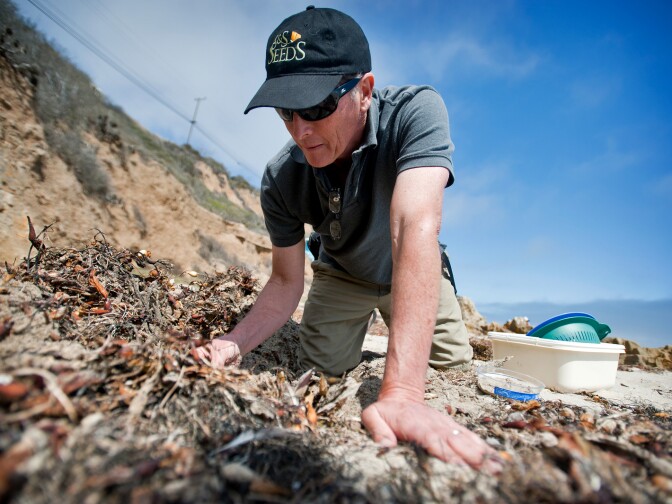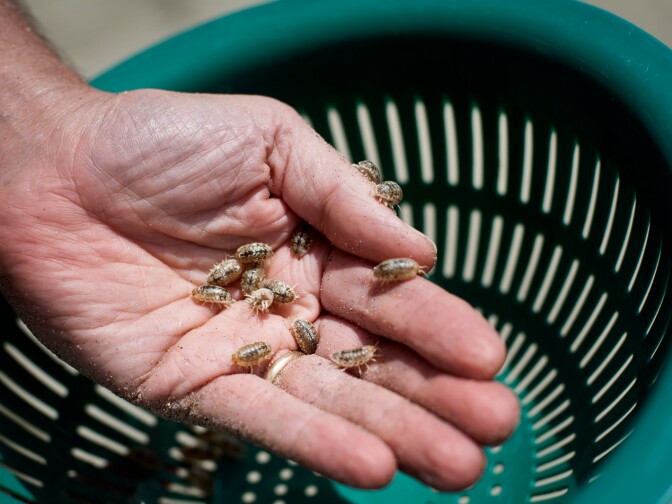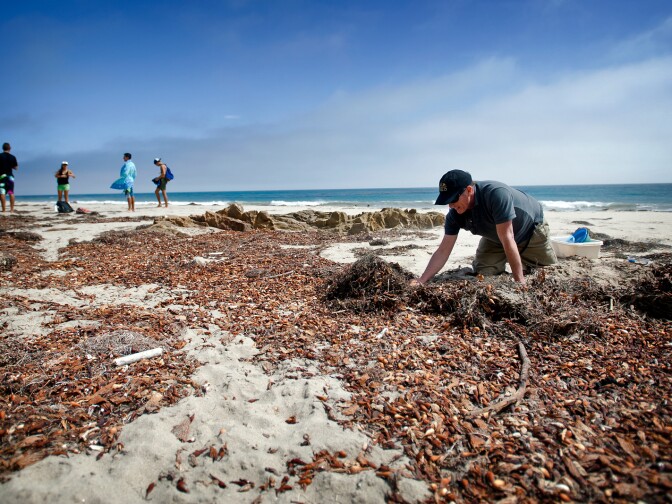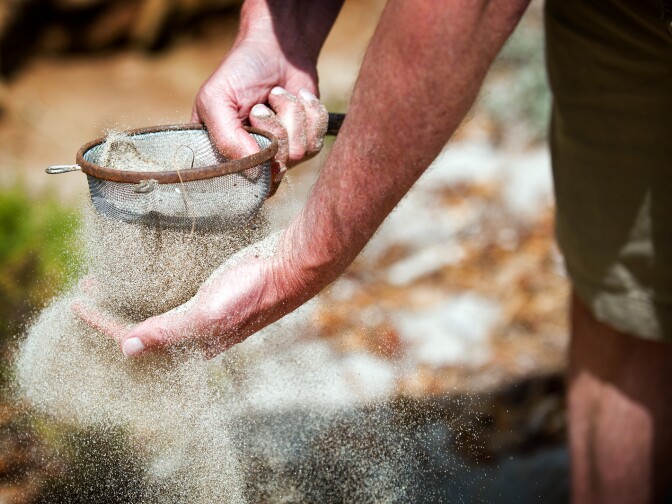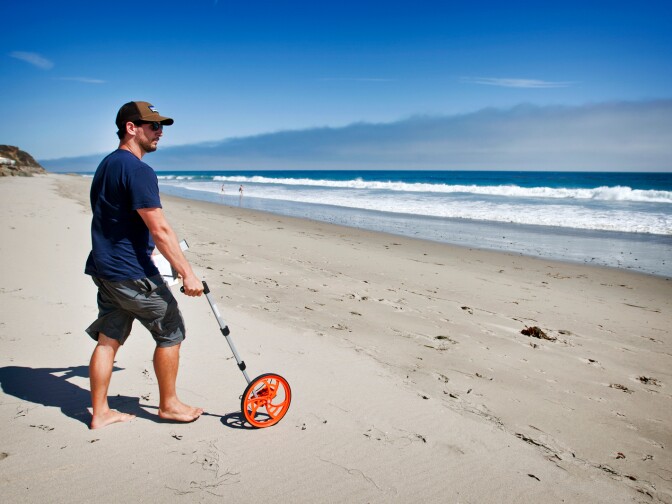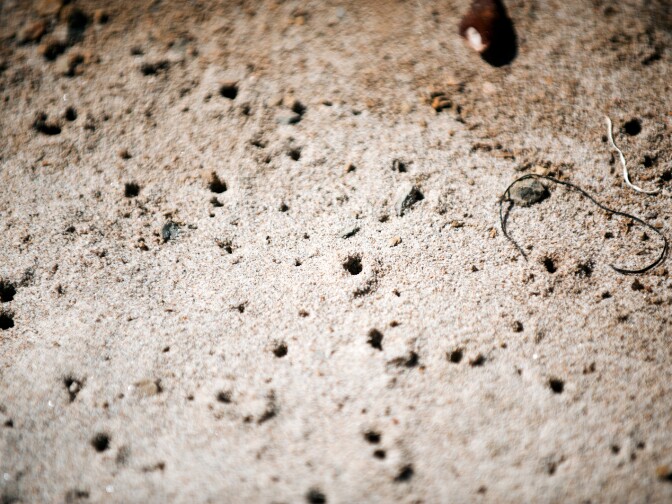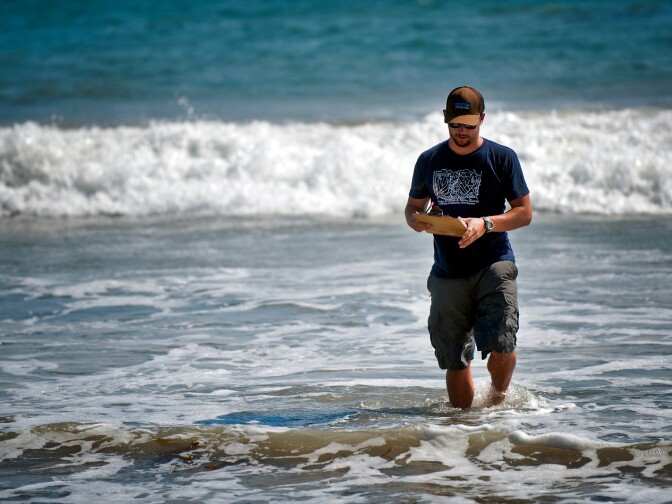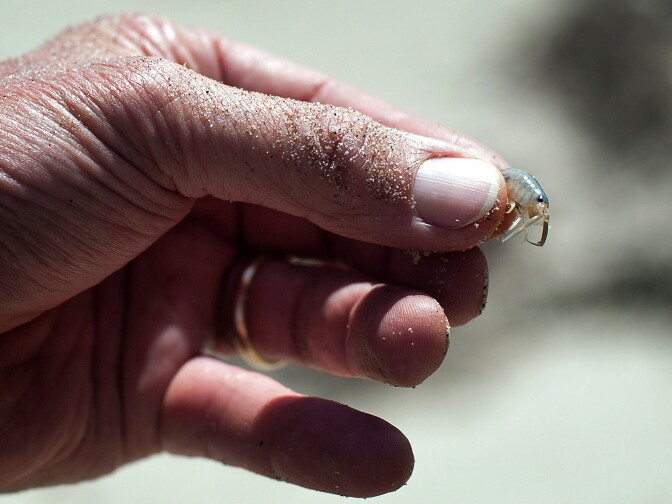Truth matters. Community matters. Your support makes both possible. LAist is one of the few places where news remains independent and free from political and corporate influence. Stand up for truth and for LAist. Make your year-end tax-deductible gift now.
This archival content was originally written for and published on KPCC.org. Keep in mind that links and images may no longer work — and references may be outdated.
Beachcombing: Loss of isopods raises questions about beach health (photos)
This story is part of our summer series "Beachcombing," in which KPCC reporters will explore the ecology, economy and culture of Southern California's beaches and coast. Let us know what you think in the comments below or on KPCC's Facebook page.
Sand-burrowing cousins to the roly-poly bugs you played with in the backyard — called isopods —are disappearing from Southern California beaches.
The isopods live in the sandy intertidal zone of the beach. A new study from scientists at UC Santa Barbara finds the tiny crustaceans and their favored habitat in peril, mostly due to coastal development.
Ecologist David Hubbard hops down stairs to one of his favorite secret beaches in Malibu, near the Ventura County line. At the rack line – where tides strand damp kelp and seaweed to dry out in sun — he digs around for isopods. He drops about a dozen in my hand, each a thumbnail across.
“Seen these guys, with all the camouflage on their backs?” he said. I have, I replied, as they tickle my hand. The creatures match the sand in the Zuma littoral cell, dark black and grey and sandy-tan on the side, light on the bottom.
RELATED: Southern California beaches are starving. Do we nourish them enough?
The colors help isopods hide from shore birds; so does burrowing in the sand. Hubbard and UC Santa Barbara marine biologist Jenny Dugan said isopods prefer sand that's neither too wet nor too dry.
“They like sand that's about the consistency of brown sugar,” Dugan said. “If you squeeze it in your hand, you can clump it,” Hubbard added. “If it's too dry, it falls apart. They have to keep their breathing apparatus damp.”
Brown sugar sand puts them squarely in between the high and low tides. Dugan said the crustaceans’ presence means the intertidal zone is healthy.
“Where we find these isopods, these beaches tend to be beaches with higher diversity and higher abundance of other similar animals, so they're an indicator,” Dugan said.
Isopods burrows look like little volcanoes, with a pronounced lip. Hubbard said you can find them on rustic beaches like Crystal Cove in Orange County and Little Dume in Malibu.
“They're abundant on beaches that are not groomed," he said.
But more and more beaches are developed, bulldozer-shaped and machine-smoothed. And Hubbard, Dugan and UCSB graduate student Nick Schooler report that isopods have disappeared from 60 percent of the locations they were historically spotted.
In a new paper, the team looked at data gathered after the 1969 Santa Barbara oil spill, and historic records dating back to a Smithsonian expedition in 1905, to count up where the tiny crustaceans were spotted, and reveal where they’ve been extirpated.
Isopods are resilient, but because they carry their young in pouches they can't relocate.
Difficult to get them back
“They don't have any planktonic larvae that come washing in,” Dugan said. “So when you lose a population of this type of animal it's very difficult to get that population started again.”
Their predators, shore birds, so far have found other snacks. But isopods play another important role: They chomp on kelp, breaking it down to recycle nutrition into the ocean. Dugan said losing the little crustaceans pokes a hole in the food web.
“You don't have that resilience and that net built in,” Dugan said. “The net starts to become very fragile, and based on just a couple of things, once you start to lose the pieces like the isopods.”
That’s not the end of the isopods’ problems. Dugan said they face a growing threat on unmanaged beaches, too, because they don't have much "wiggle room."
Waves are crashing further ashore because of erosion (from development) and sea level rise (caused by climate change). Coastal cliffs and houses mean beaches have no place to retreat, at Malibu’s Broad Beach and other places.
“These are the beaches that are going to be squeezed and narrowed, and this zone will become either very restricted or lost in a lot of these places because the waves will wash to the cliff too many times a year for the animals to survive,” Dugan said.
Dugan and Hubbard are studying Southern California beaches including shore birds, kelp, and yes, isopods – contributing baseline studies to California's marine protected area program.
The state's conservation efforts aim to improve the health of the coastal ecosystem by limiting human impacts to underwater kelp forests and adjoining beaches. If they succeed, the isopods could come marching back onto at least some of Southern California's beaches.



